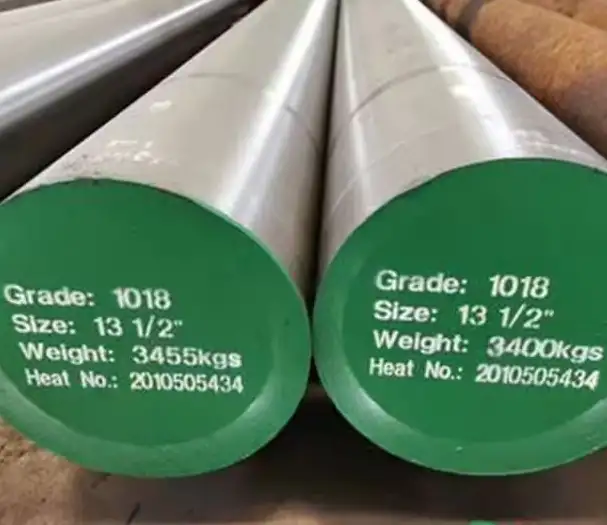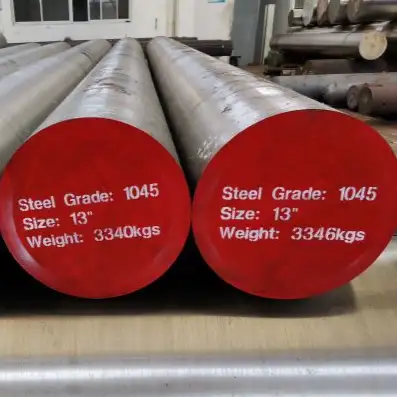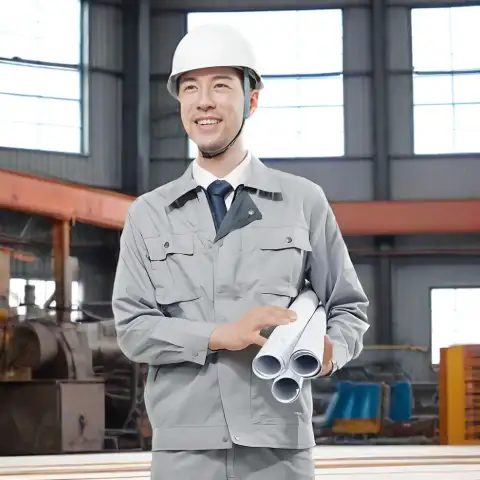For projects that require good machinability, excellent weldability, and cost-efficiency, AISI 1018 is the preferred choice. When higher strength, greater wear resistance, and the ability to take a harder heat treatment matter, AISI 1045 outperforms 1018. Choose 1018 for fabrications that demand easy forming or frequent welding; choose 1045 when higher load-bearing capacity, moderate hardenability, or improved fatigue life are critical.
What are 1018 and 1045 grades?
-
AISI/SAE 1018: a low-carbon mild steel, nominal carbon near 0.18% by weight. It is widely used for turned parts, shafts that require welding, and cold-drawn bar stock where finish and machinability count.
-
AISI/SAE 1045: a medium-carbon steel, nominal carbon near 0.45% by weight. It gives higher as-manufactured strength and can be heat treated to achieve greater hardness, making it common for gears, axles, shafts, and other structural components.
Chemical composition (typical ranges)
Below are representative, industry-common composition ranges for annealed/cold-drawn bar stock. Actual mill certificates should always be checked for procurement orders.
| Element | AISI 1018 (typical wt%) | AISI 1045 (typical wt%) |
|---|---|---|
| Carbon (C) | 0.14 – 0.20 | 0.42 – 0.50 |
| Manganese (Mn) | 0.60 – 0.90 | 0.60 – 0.90 |
| Phosphorus (P) | ≤ 0.040 | ≤ 0.040 |
| Sulfur (S) | ≤ 0.050 | ≤ 0.050 |
| Iron (Fe) | Balance (~98.8 – 99.3) | Balance (~98.5 – 99.0) |
Sources: MatWeb / industry datasheets for 1018 and 1045.

Mechanical properties
Properties vary with finish and heat treatment. The table shows representative vendor values for common conditions (cold-drawn or annealed bar stock), useful for preliminary design.
| Property | AISI 1018 (typical) | AISI 1045 (typical) |
|---|---|---|
| Tensile strength (UTS) | ~440 MPa (≈64,000 psi) | ~625 MPa (≈90,000–91,000 psi) |
| Yield strength (0.2% offset) | ~370 MPa (≈54,000 psi) | ~520–540 MPa (range varies by condition) |
| Elongation (%) | ~15% | ~12% |
| Brinell hardness (HB) | ~120–130 | ~170–210 |
| Modulus of elasticity | ~200 GPa | ~200 GPa |
These numbers reflect common commercial specifications; custom mill processing (cold drawing, quenching, tempering) will change values.
Microstructure and heat treatment behavior
-
1018 microstructure in the normal/annealed state: predominantly ferrite with some pearlite islands because of low carbon content. That microstructure yields good ductility and toughness.
-
1045 microstructure in annealed state: greater pearlite fraction versus 1018; this contributes to higher strength and hardness. With proper quench + temper treatment, 1045 can reach significantly higher hardness and strength than 1018, although full hardening requires adequate section size and quench control.
Practical note: 1045 can be through-hardened in thin cross sections. For greater surface wear resistance while retaining ductile core, 1045 is often carburized or induction-hardened. 1018 is not a good candidate for deep hardening because low carbon limits achievable hardness.

Machinability, formability, and surface finish
-
Machinability: 1018 machines more readily; tooling life tends to be longer, feeds and speeds higher, chip control simpler. 1045 machines acceptably but tool wear increases due to higher hardness and more pearlitic microstructure.
-
Forming and cold working: 1018 tolerates cold bending, stamping, and drawing better. 1045 requires more force, and springback/strain-hardening behavior differs.
-
Cold-drawn surface finish: Both grades are available cold-drawn for superior concentricity and surface finish; 1018 cold-drawn is especially common for turned shafts where finish specs are tight.
Welding, brazing, and joining
-
1018: very weldable with standard carbon-steel filler metals; preheating rarely required for typical thicknesses; low cold-cracking risk. This grade thus suits welded assemblies and fabrications.
-
1045: welding becomes more challenging because higher carbon raises the risk of martensite and cold cracking in the heat-affected zone. If welding is required, use low hydrogen procedures, preheat for thicker sections, and perform post-weld tempering when warranted. For critical parts, consider switching to a lower-carbon weld filler or design changes to avoid welds in high-stress zones.
Equivalents, international names
| AISI/SAE | Common equivalents (EN, JIS, DIN) |
|---|---|
| 1018 | EN ≈ C15 / 1.0401 (close); Chinese common label: 15# (C15) — confirm with supplier mill cert |
| 1045 | EN ≈ C45 / 1.0503; JIS ≈ S45C; DIN ≈ CK45 — widely cross-referenced. |
Procurement tip: equivalence tables give a starting point, but metallurgical composition tolerances differ. Always request a material test certificate (MTC) for critical orders.
Typical applications and part examples
Choose 1018 for:
-
Welded frames, brackets, light shafts, studs, and fasteners where weldability and ductility matter.
-
Cold-drawn pins, dowels, and decorative or mechanically finished parts needing good surface finish.
Choose 1045 for:
-
Structural shafts, medium-duty gears, axles, crankshafts (non-high-performance), sprockets, camshafts with moderate heat treatment, and components requiring better wear resistance.
Case example: a welded conveyor frame that will see light loading — 1018 is often chosen for simpler welding and cost. A transmission pinion for moderate loads — 1045 or heat-treated 1045 is common for better fatigue performance.
Price & sourcing (market perspective)
-
Raw material cost: 1045 typically commands a premium versus 1018 due to higher carbon content and often tighter rolling/hardening controls. Market prices for bar stock change with scrap and steel cycles. For ballpark planning, vendors and mills publish variable per-kg or per-ton prices; consult current quotes for accurate budgeting.
-
MWAlloys sourcing advantage: MWAlloys supplies both 1018 and 1045 bar product lines from Chinese mills. MWAlloys offers 100% factory price, stock inventory for rapid dispatch, and flexible packaging for export. For many customers, purchasing direct from MWAlloys reduces landed cost while maintaining mill-certified traceability.
Procurement suggestions:
-
Ask for MTC (mill certificate) and chemical analysis.
-
Specify finish (hot-rolled vs cold-drawn), straightness, and surface tolerance.
-
For heat-treated parts, specify hardness and heat treatment record.
Selection checklist
-
Need high weldability and easy forming? → 1018.
-
Need greater strength, wear resistance, or to harden by quench/temper? → 1045.
-
Plan to carburize for surface hardness? → 1045 preferred.
-
Tight surface finish and concentricity for shafts? → Cold-drawn 1018 or cold-drawn 1045 depending on strength needs.
-
Welding thick sections under dynamic load? → Avoid 1045 without proper pre/post heat treatment.
Tables summary (side-by-side)
Quick comparison
| Feature | 1018 | 1045 |
|---|---|---|
| Carbon content | Low (~0.18%) | Medium (~0.45%) |
| Strength (annealed) | Moderate | Higher |
| Hardening capability | Limited | Good (can be quenched/tempered, carburized) |
| Weldability | Excellent | Limited; requires care |
| Machinability | Better | Good, higher tool wear |
| Common uses | Welded parts, shafts, pins | Gears, axles, medium-duty shafts |
| Typical Brinell hardness | ~120–130 | ~170–210 |
Sources: vendor technical datasheets and materials references.
FAQs
1) Can 1018 be heat treated to high hardness?
No. 1018 contains limited carbon; it cannot reach high through-hardness by standard quenching. Surface treatments (case carburizing) are possible but not common for 1018. For bulk hardness, choose 1045 or an alloy steel.
2) Is 1045 magnetic?
Yes. Both 1018 and 1045 are ferromagnetic steels. Magnetic behavior is typical for carbon steels.
3) Which grade is easier to weld?
1018 is easier to weld. 1045 often needs preheat and low-hydrogen procedures for heavier sections to avoid cracking.
4) Are there direct Chinese equivalents?
Yes. 1018 often aligns with Chinese 15# (C15) in some supply chains; 1045 aligns with Chinese 45# (C45). Verify composition and MTC.
5) What are common machinability percentages?
Relative machinability ratings place 1018 high, often used as a baseline. 1045 machines at somewhat lower rates; exact percentages depend on heat treatment and finish. Consult vendor data for cutting parameters.
6) Can 1045 be case-hardened?
Yes. Carburizing or induction hardening of 1045 is common to create a hard surface layer with a tough core.
7) For turned shafts under cyclic load, which to pick?
Prefer 1045 when higher strength and fatigue resistance matter; if welding a shaft or performing extensive bending, 1018 may be preferable. Final choice depends on load, surface finish, and post-machining treatments.
8) Is 1045 stainless?
No. Both 1018 and 1045 are plain carbon steels without significant chromium for corrosion resistance. For corrosion resistance, choose stainless alloys.
9) What inspection documents should I demand?
Request MTC to EN 10204 3.1 or 2.1 (depending on buyer needs); include chemical analysis, mechanical test reports, and heat-treatment records for heat-treated parts. Confirm surface finish, straightness, and certification for export.
10) How fast can MWAlloys deliver?
MWAlloys holds stock for many standard sizes and can arrange fast dispatch from Chinese factories. Lead times vary with quantity and finish; contact MWAlloys sales for exact ETA and factory price quote. (MWAlloys offers direct factory pricing and flexible export packaging.)
Practical MWAlloys offer
MWAlloys supplies 1018 and 1045 in standard bar, round, and shaft stock sizes from Chinese mills. Benefits:
-
100% factory pricing (direct mill links).
-
Inventory for fast turnaround on common sizes.
-
Mill test certificates with each lot.
-
Export packing, QC inspection prior to shipping.
Selection checklist
-
Grade (1018 or 1045).
-
Dimension (OD × length) and tolerance class.
-
Finish (hot-rolled / cold-drawn).
-
Heat treatment requirement (annealed / normalized / quenched+tempered / carburized).
-
Required hardness (HB / HRC) if heat treated.
-
Certification level (e.g., EN 10204 3.1).
-
Surface finish spec (Ra, concentricity).
-
Quantity and delivery port.
Closing notes
This technical comparison highlights the practical tradeoffs: 1018 trades strength for excellent formability, weldability, and machinability; 1045 provides higher base strength and an ability to accept meaningful heat treatment for improved wear resistance and fatigue life. For factory-direct pricing and fast stock shipments, MWAlloys supports global orders with mill certificates and tailored packaging.

